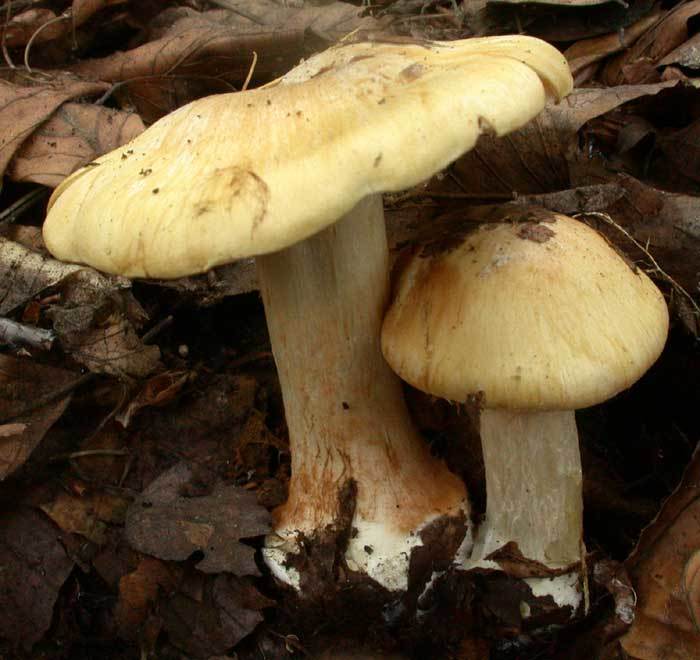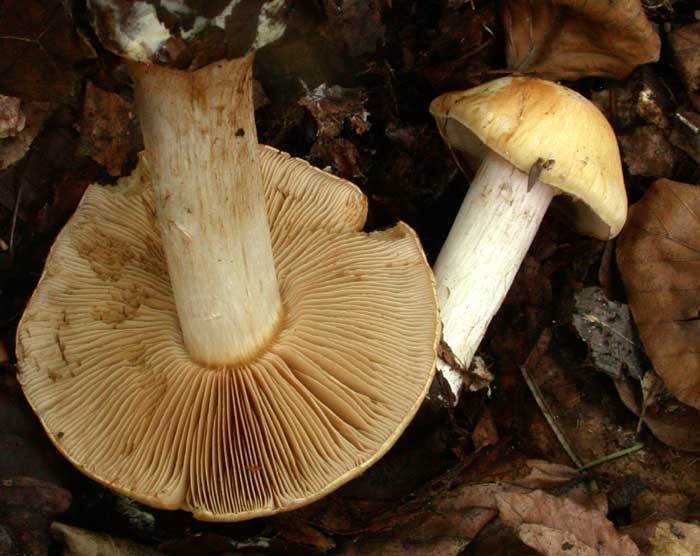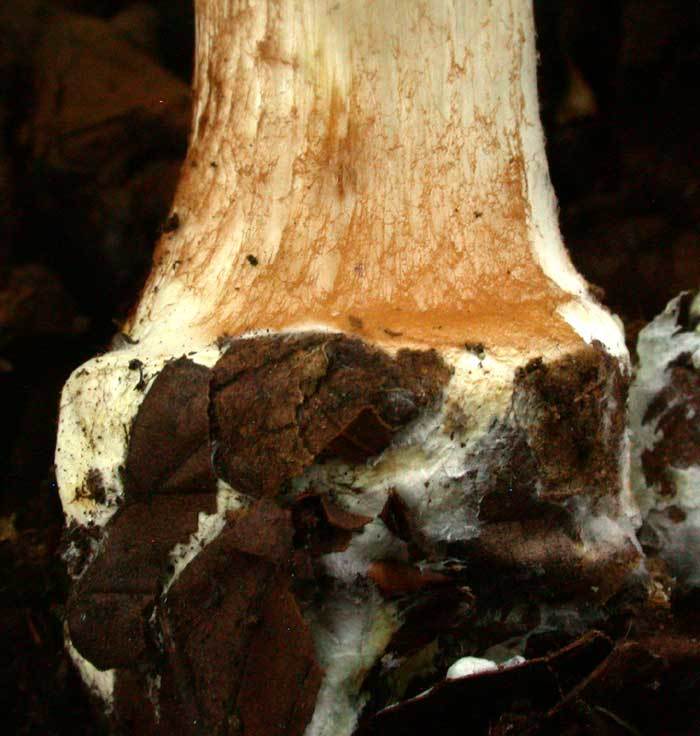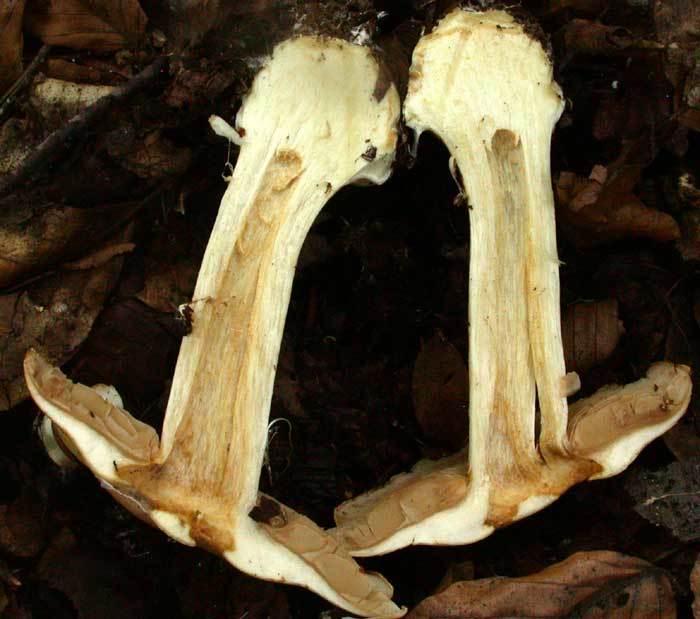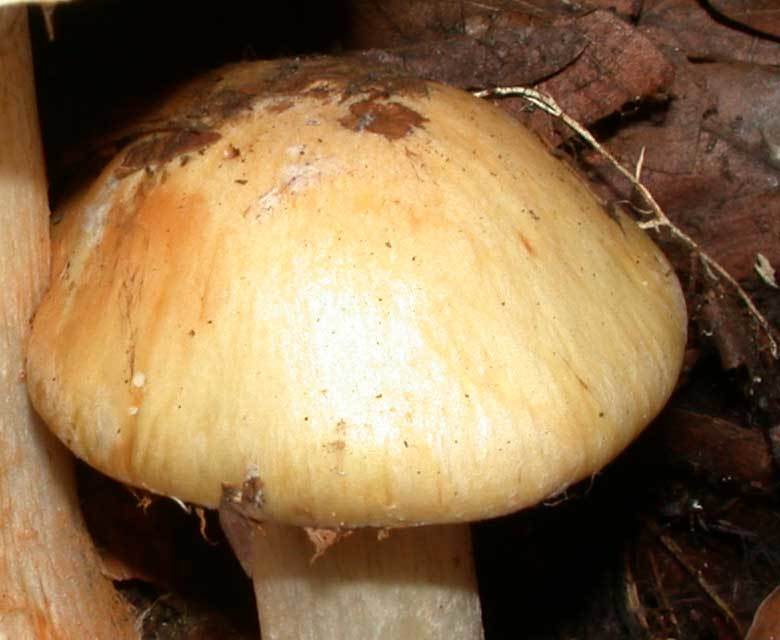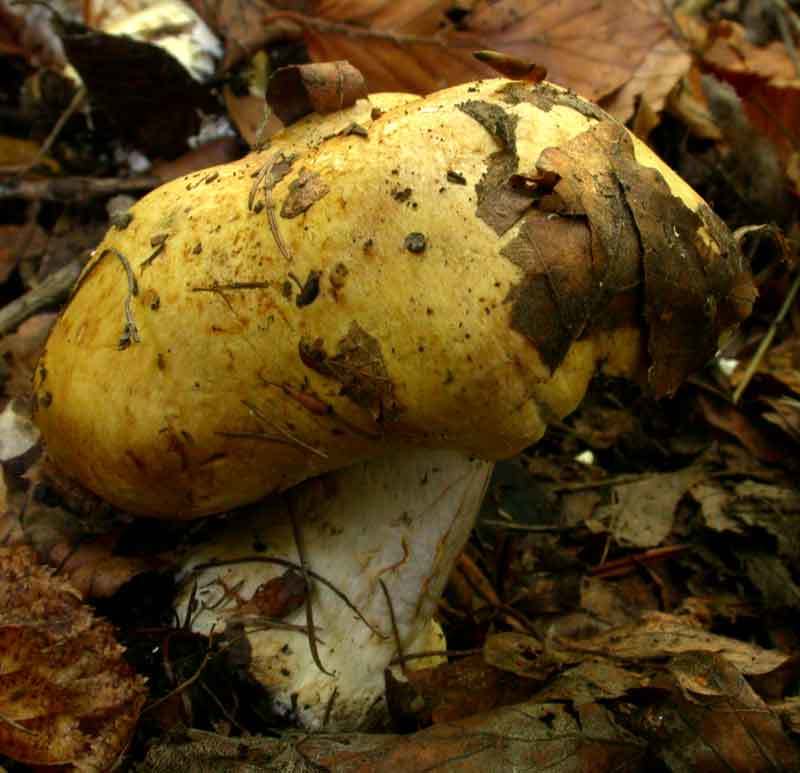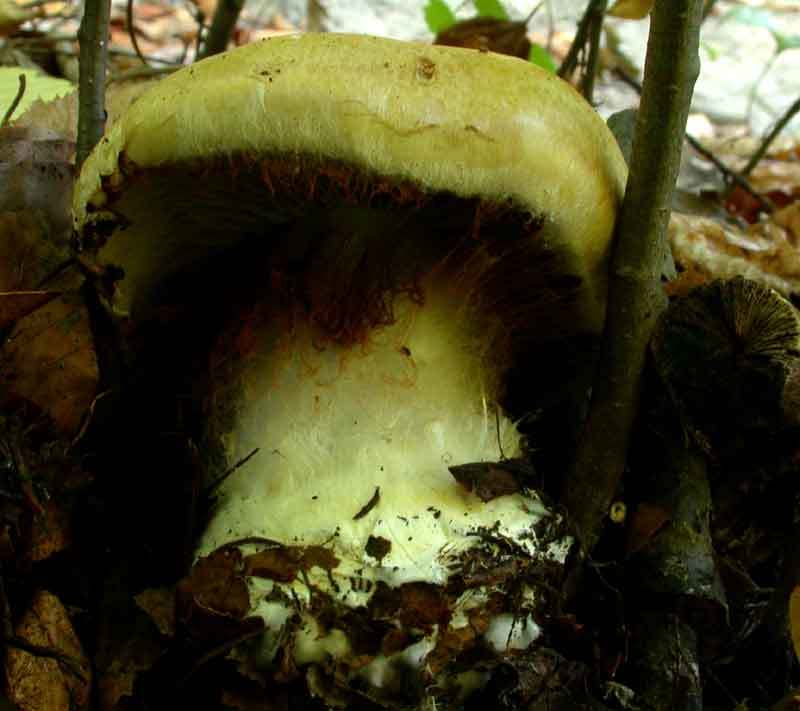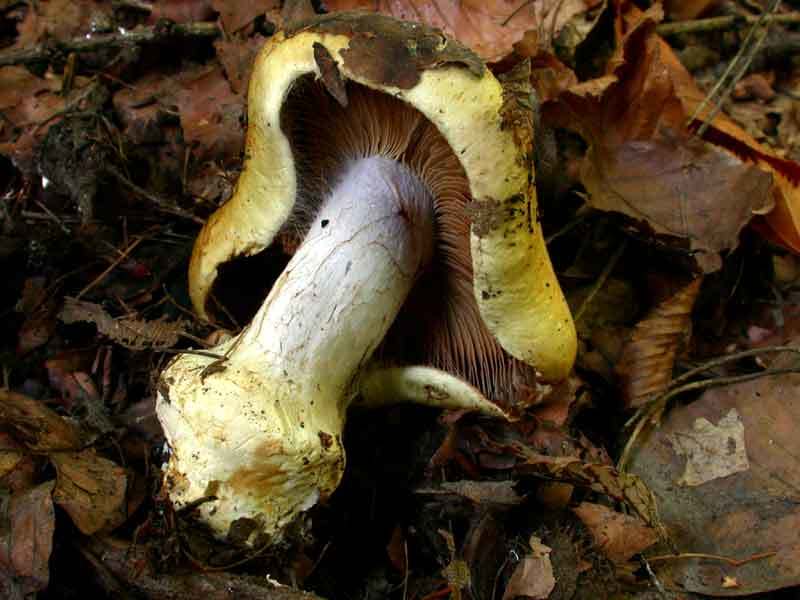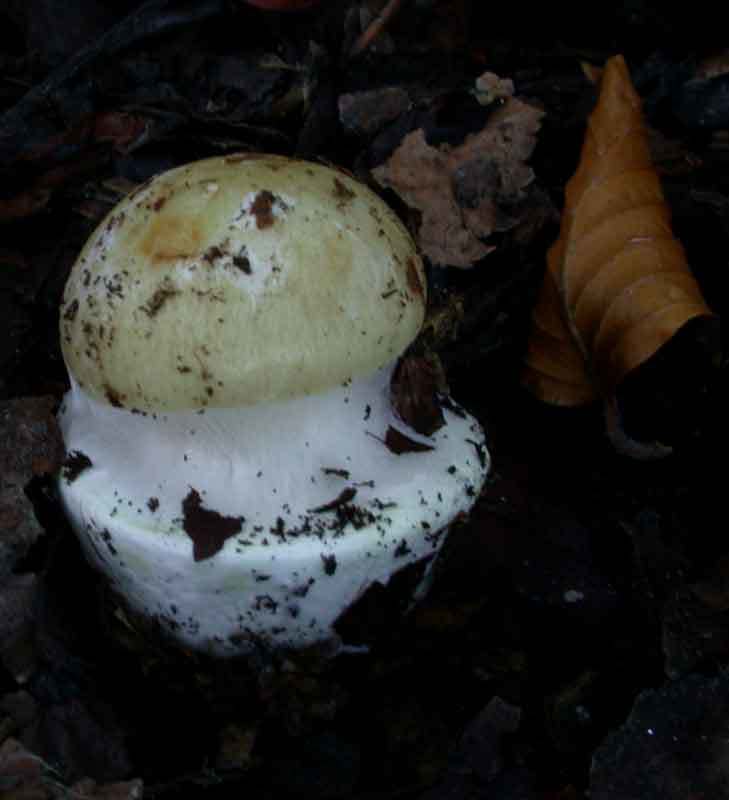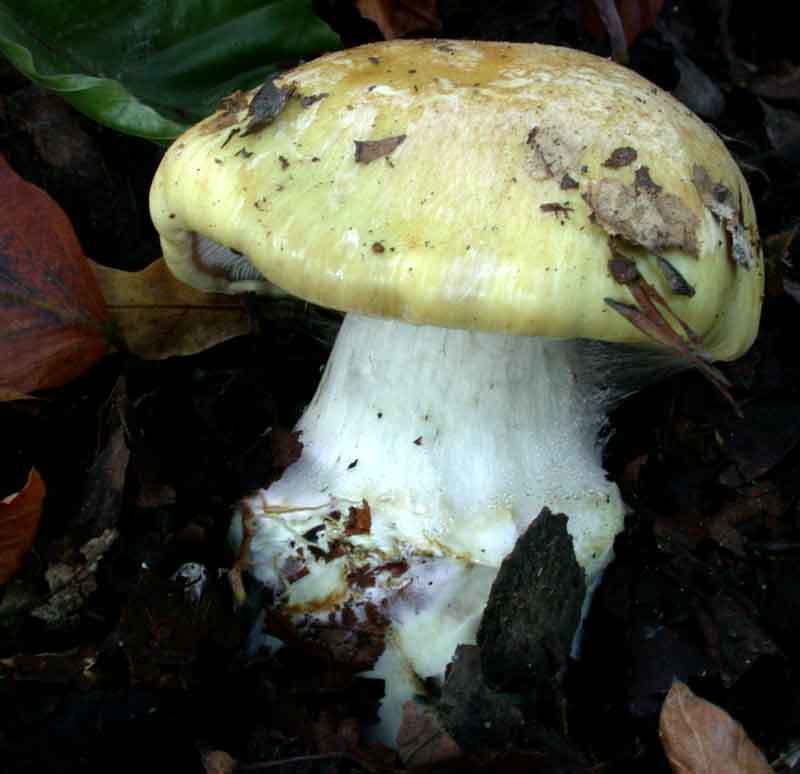Dear Marek,
as you understand english, please let me answer in this language, as otherwise I would nee the whole night and may be still can't express myself ....
First to the pictures of the young Phlegmacium in your last thread:
It is very very probably that this is Cortinarius anserinus. At least they are very tyoical for this species. The very pale yellowish-olivaceous cap and the blue colours in the flesh of the stipe and the gills are typical (teh blue colours are not very good to see on your foto. you should always have one fruitbody cut into half)
Now to the first pictures:
The differences between multiformes group and all other Phlegmacium is in the uniformely ochraceous colours throughout, the pale gills and the quite strong fibrillouse cap structure ("wloknisty). They usually have quite small spores with only weak ornamentation.
I will add a foto of a this years finding in decidous forest on chalk, and I'm not yet sure how to name it. May be C. polymorphus is a good name for it. 20 years ago one would have name it C. multiformis ;-)
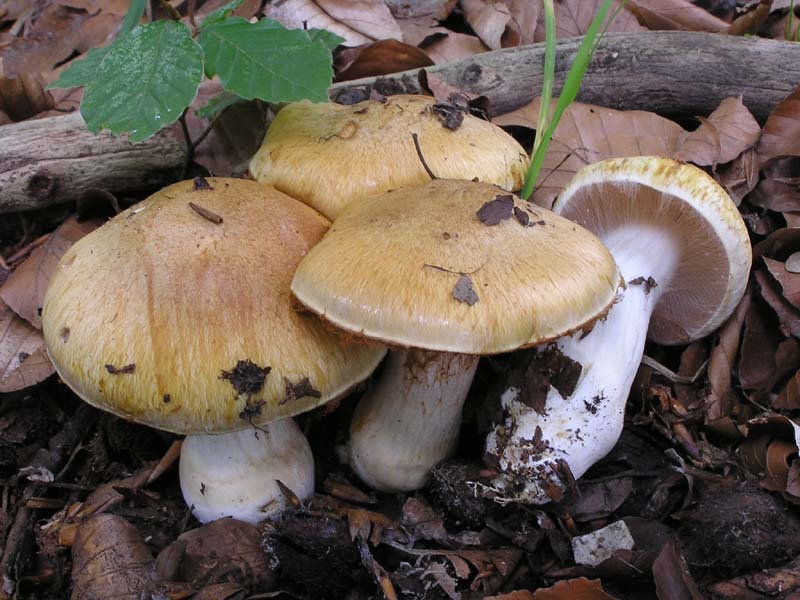
Now to the others which you asked about:
The third Phlegmacium is one of Sektion Fulvi, an there one of the species which is strongly oxydating. I would tentatively put it near to Cortinarius alcalinophilus ss. BRANDRUD et al. (CFP - Cortinarius Fotoflora Project). I prefer to name this species Cortinarius majusculus for the moment, because I have no better name. It ia species which is greenish-yellow when young and covered by leaves but gets rusty orangebrownish when exposed to the air.
But this is not a determination of course, but only a hint where you might look for it.
I add a foto of a collection at the very same side as the other foto of C. polymorphus/multiformis. They also grew together, just as in your forest. It is a foto of the caps which show the colour change from greenish-yellow to rusty.

The Hebeloma has to be investigated deeper, e.g. one has to know the shape of the cheilocystidia and the dextrinoid reaction of the spores.
I strongly doubt that it is Hebeloma velutipes/leucosarx, as it is far to big and the stipe is not pruinouse but floccose in your species. May be it ia only pale H. sinapizans. But may be it is something better that I don't know. If you have access to the new monographie by Vesterholt, you most likely will get a name for this one.
At last the Macrolepiota, a genus probably more complicated than most others ....
I think that your fungus does not belong into the mastoidea-Komplex, because it has not a prominent umbo as these species use to have. And it is neither Leucoagaricus nympharum (Macrolepiota puellaris) nor Macrolepiota excoriata.
If you name it Macrolepiota konradii, your certainly have right. But in which sense? Not in the sense of VELLINGA, which has a very broad concept of M. mastoidea, including also konradii. I know this "konradii ss. VELLINGA" from Mesobrometum and other grass lands and it is right that it is to be included in the mastoidea-complex. What I have named konradii in the "Grosspilze Baden-Württemberg" is something else, like a small M. procera. It is the same as in "Pilze der Schweiz". Henk HUIJSER, which in my eyes is one of the authorities in Lepiota s.l. thinks that "my" konradii is the same as the dutch mycologists name M. fuligineosquarrosa. And indeed, may be he has right. It is a fungi in the general appearance of M. procera, but in the size of M. mastoidea. The scales on the cap are very easily to peel of, they nearly fall down already by theirselfes, and usually the flesh is a little bit reddening in the cortex layer of the stem base.
But to complicated this situation, I have to admit that Henk HUIJSER knows a Macrolepiota besides "konradii ss. Vellinga = mastoidea" and "konradii ss. Gminder, Breitenbach/Kränzlin = fuligineosquarrosa"! Unfortunately we have never succeeded in finding this "konradii ss. Huijser" together, so I still have no concept of this third konradii, which HUISER thinks to be the real one. May be you have this third one here, because the cutis looks a little strange compared to my findings of fuligineosquarrosa.
May be this was more irritating then clearing something, but macrolepiota is a very difficult thing ....
best regards,
Andreas
